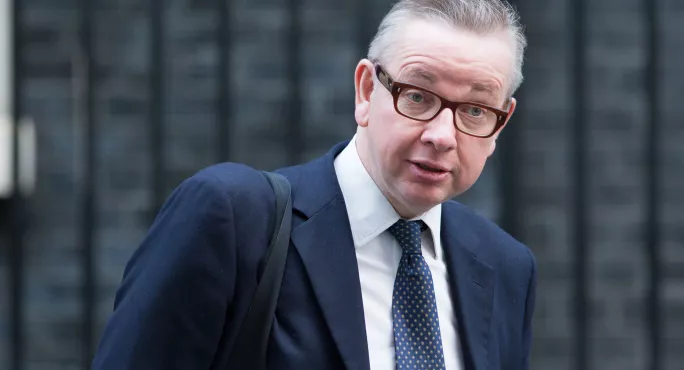- Home
- Gove’s school space cuts ‘will hamper safe reopenings’
Gove’s school space cuts ‘will hamper safe reopenings’

A decision by former education secretary Michael Gove to cut minimum classroom dimensions means many primary schools will struggle to safely reopen to all pupils before the summer, a school architect has warned.
Guy Shackle argues classrooms built to current standards are not big enough to “safely accommodate” more than 12 pupils in the current circumstances.
The government has recommended group sizes of 15 for schools reopening after lockdown.
Heads: Full primary return before summer ‘unrealistic’
School reopenings: ‘A tough day’ - teachers’ experiences of 1 June return
Analysis: Are children really capable of social distancing?
International: How Dutch schools reopened with no pupil distancing
“No government, educationalist or architect could have anticipated the social distancing measures that will now need to be enforced in our schools for the foreseeable future,” Mr Shackle said.
“But classrooms built to current space standards will struggle to safely accommodate more than 12 pupils in either primary or secondary school settings.”
His comments will add further pressure on the government to rethink its plan to bring all primary pupils back this term. Both heads’ unions and the National Governance Association have warned this will not be practically possible.
Mr Shackle is concerned about guidance produced by the DfE in 2014, which states that standard classrooms should measure between 55sqm and 62sqm for 30 pupils, excluding Reception classrooms.
Writing for Planning Learning Spaces magazine, he warns that, as people often work to the minimum specification, this means many newer classrooms are not adequate for housing standard half class groups of 15 and allowing two metre spaces have to be maintained between students.
“Classes of thirty pupils will need to be split over three rooms so further reducing access to face-to-face learning,” he writes.
But the DfE has said it appreciates that primary age children “cannot be expected to remain two metres apart from each other and staff”.
The change to the space standards came after the Coalition government scrapped the Building Schools for the Future programme - a multi-billion pound scheme to improve secondary schools in England.
The programme, launched in 2003, was matched by a “raising of the bar” on space standards, increasing the area of secondary classrooms by 20 per cent.
Primary school classroom sizes were later increased by over 10 per cent under this scheme, with more generous learning support spaces, Mr Shackle said.
Mr Shackle is calling for the government to increase the area for new build classrooms “by approximately 10 per cent to reverse the reductions imposed in 2014”.
His preferred specifications, that he says would allow for social distancing of at least two metres, would be:
- Primary (Reception/Infant) - 67.5sqm
- Primary (Junior) - 63sqm
- Secondary - 60sqm
The DfE said its guidance on class sizes makes clear that each school’s circumstances will be slightly different, and any school that cannot achieve the recommended small groups at any point should discuss options with their local authority or trust.
The Association of School and College Leaders (ASCL) warned last night that plans for a full primary return before the summer were unrealistic, as it will “not be possible to maintain class sizes of 15 with a full intake of children” due to a lack of space and staff.
And school leaders’ union NAHT has said it will be impossible for schools to accommodate all primary pupils for a month before the end of term, based on the existing advice from the Department for Education (DfE).
The National Governance Association has also written to the education secretary, Gavin Williamson, stating that it is not “practically possible” to achieve a full return to primary schools before the end of term.
Yesterday, chair of the Education Policy Institute (EPI) and former schools minister David Laws told MPs that even September might be too early for a full return to school.
“Sadly we may end up with considerable disruption to school in September, October and November,” he said.
A DfE spokesperson said: “From this week, many schools have begun welcoming children from Reception, Year 1 and Year 6 back to the classroom as part of a phased and cautious approach.
“To prepare for this, headteachers and school staff have been doing an excellent job including putting protective measures in place and engaging with parents and children.
“We will continue to support schools who haven’t yet been able to open more widely to do so as soon as possible.”
Michael Gove has been approached for comment.
Keep reading for just £1 per month
You've reached your limit of free articles this month. Subscribe for £1 per month for three months and get:
- Unlimited access to all Tes magazine content
- Exclusive subscriber-only stories
- Award-winning email newsletters



